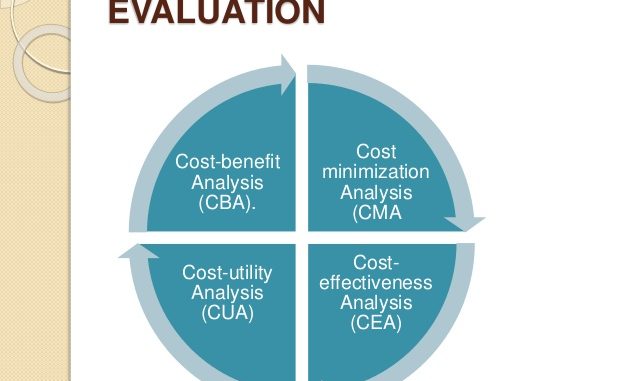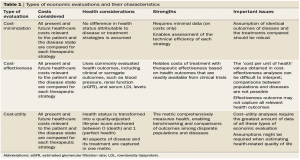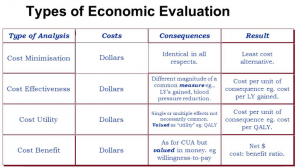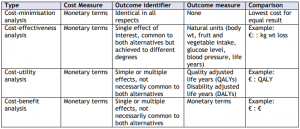
What is Economic Evaluation?
- Economic Evaluation is the comparative analysis/evaluation of two or more interventions in terms of their cost and consequences
- It is the evaluation or assessment of different programs based on their input given Vs results/outcomes generated
- Economic evaluation is also known as economic appraisal
- The most fundamental/basic concept of these economic evaluations are that both the costs and benefits of all the available options are taken into account
- However, the cost and benefit vary according to the viewpoint adopted in the analysis
Importance of Economic Evaluations:
- At present, resources are being limited while on the other hand, costs of programs are rising in addition with more innovative and technological advancements. Thus, economic evaluation has become a necessary and a dire need
- Economic evaluation also helps to prioritize the programs and make the best decision for optimal resource allocation
- Economic evaluations are important tools for assessing economic feasibility and efficiency of health interventions
Types/Methods of Economic Evaluation:
- There are major 4 different types of economic evaluation methods. They are:
- Cost Benefit Analysis (CBA)
- Cost Effective Analysis (CEA)
- Cost Utility Analysis (CUA)
- Cost Minimization Analysis (CMA)
- Each of this analysis involves systematic identification and measurement of the costs and consequences of the interventions
- Cost Benefit Analysis (CBA)
- In this method of evaluation, cost of the intervention is compared with the benefit incurred from the intervention
- Both costs and benefit is measured in terms of monetary units
- The net benefit is measured as: Net benefit= Benefit – Costs
- Therefore, if the benefit exceeds the cost incurred during the intervention, the intervention should be continued
- Cost Minimization Analysis (CMA)
- In this method of analysis, costs of two or more interventions achieving identical outcome is measured. The intervention incurring the lowest cost is then chosen
- It should be strictly noted that the intervention can only be conducted when the outcomes of the comparing interventions are same
- Cost Effective Analysis (CEA)
- In this method of analysis, cost is measured against the effectiveness of the intervention (effectiveness is the final consequence)
- The consequences of the comparing interventions may vary here (different than cost minimization analysis where the outcomes of interventions were identical). However, these consequences can be expressed in common natural units like life years gained, saved years of life etc or improvement in functional status (units of cholesterol, blood pressure etc.)
- The limitation of this analysis is that it is difficult to compare the interventions with differing natural effects. Eg: interventions which are focused on looking at life years saved cannot be compared with other interventions which are focusing on improving the physical functioning
- Cost Utility Analysis (CUA)
- In this method of analysis, cost incurred in the intervention is measured against the “utility” related to health
- Utility refers to the Quality Adjusted Life Years (QALY), Disability Adjusted Life Years (DALY)
- This method is specially used when there are multiple objectives of the program and when both quality of life and quantity of life are important to know
- It is also used to make policy level decisions
Furthermore, strengths of different economic evaluations along with other important aspects are mentioned below:

In short, we can also understand different types of economic evaluations as:

On the other hand, on the basis of measurement of consequences, economic evaluations can be remembered as:
| Type of study | Measurement of consequences |
| Cost minimization analysis | No measurement of consequences as the consequences/ outcomes are same |
| Cost effective analysis | Outcomes are measured in natural units. Eg: life years gained, life years saved etc |
| Cost utility analysis | Utility of the intervention is measured Eg: DALY, QALY |
| Cost benefit analysis | Consequences are measured in monetary terms |
In addition, below given table can be also useful to know the details of all the economic evaluations:

References and for more informations:
https://www.ncbi.nlm.nih.gov/pmc/articles/PMC1115723/
https://www.ncbi.nlm.nih.gov/pubmed/8401057
http://www.bmj.com/content/316/7136/1013.1
https://www.cdc.gov/dhdsp/programs/spha/economic_evaluation/docs/podcast_i.pdf
http://www.who.int/water_sanitation_health/publications/2012/ch12.pdf
https://www.umu.se/en/education/courses/health-economic-evaluation-methods/
https://bmchealthservres.biomedcentral.com/articles/10.1186/1472-6963-9-85
http://onlinelibrary.wiley.com/doi/10.1002/jid.3380070311/abstract
http://ocw.jhsph.edu/courses/ConceptsEconomicEvaluation/PDFs/Lecture1.pdf
http://www.phac-aspc.gc.ca/mh-sm/pubs/evaluation/chpt2-3-eng.php
https://www.diva-portal.org/smash/get/diva2:144232/FULLTEXT01.pdf
http://www.nature.com/nrneph/journal/v10/n11/fig_tab/nrneph.2014.145_T1.html
http://www.bmj.com/content/318/7194/1349.1
http://www.cre-cp.org.au/resources/health-economics/evaluations/
https://www.slideshare.net/charissefuturepsychiatrist/economic-evaluation
http://www.uphs.upenn.edu/dgimhsr/documents/introecon.sp11.pdf
http://scireproject.com/tables/strengths-and-weaknesses-of-varying-types-of-economic-evaluations/